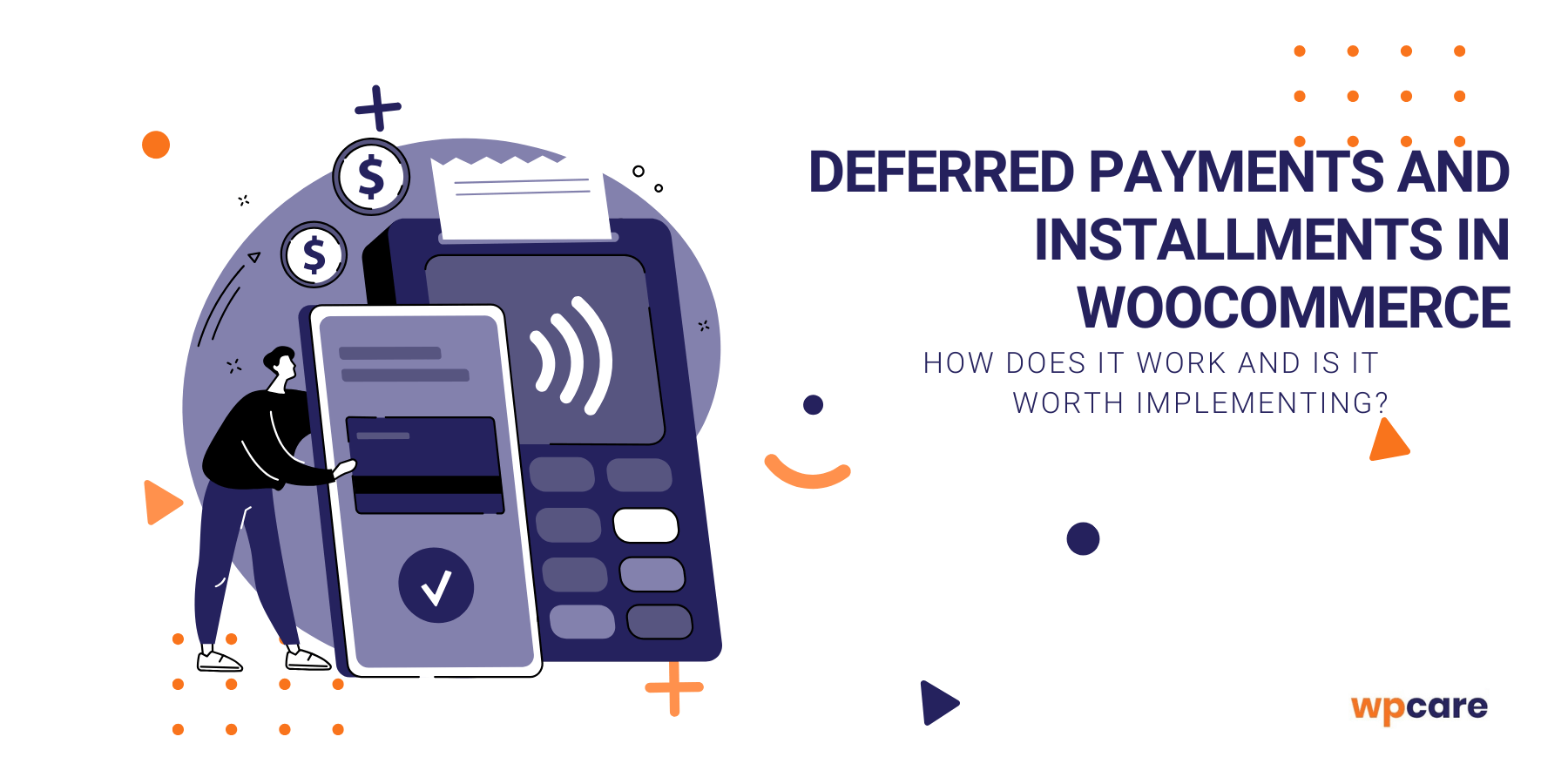Online shopping is becoming increasingly convenient and flexible – customers not only expect fast delivery and a variety of payment methods, but are also increasingly looking for options to spread their expenses over time. Deferred payments (also known as Buy Now, Pay Later) and installment purchases are solutions that are rapidly gaining popularity in e-commerce. They give buyers greater financial freedom and offer sellers a real chance to increase conversion rates and average cart value.
For stores based on WooCommerce, implementing such options doesn’t have to be complicated – there are ready-made plugins and integrations that allow you to launch them almost instantly. In this article, we’ll look at how deferred and installment payments work in WooCommerce, what advantages and challenges they bring, and when it’s worth investing in them.

How do deferred and installment payments work?
Definition of deferred payments
Deferred payments, also known as Buy Now, Pay Later (BNPL), are a form of financing that allows the customer to purchase a product or service immediately. However, they only pay for it after a specified period – usually 14, 30, or even 60 days. In practice, this means that the buyer can use the ordered goods right away, while transferring the funds later, often without additional costs if the payment deadline is met. This is a convenient solution for those who want to postpone the burden on their household budget without giving up the purchase.
Differences between deferred payment and installment purchase
Although both solutions allow spreading the payment over time, they differ in their mechanisms:
Deferred payment means postponing the entire amount to a later date. The customer pays once, but only after the agreed period (e.g., in 30 days).
Installments mean dividing the amount due into several or a dozen smaller payments, which the customer repays at specified intervals – e.g., monthly. Depending on the offer, installments may be interest-free (0%) or include additional costs such as fees and interest.
In summary – deferred payment is a short-term “credit” without splitting the amount. Installments, on the other hand, allow spreading a larger expense over a longer period, making it easier to buy more expensive products.
Deferred payments and installments in WooCommerce – how to implement them?
Plugins and integrations available for WooCommerce
WooCommerce offers great flexibility when it comes to implementing additional payment methods. For deferred and installment options, there are many plugins and integrations available, both from global providers (e.g. Klarna, PayPal Pay Later, Stripe) and local Polish payment operators (PayU, Przelewy24, Tpay).
Thanks to these integrations, you can quickly launch the Buy Now, Pay Later or installment payment function in your store without programming – just install the appropriate plugin and link it to your provider account.
Configuration steps – how to add options to the store
The implementation process usually follows a similar pattern:
- Choosing a payment provider – decide whether to use global systems (e.g., Klarna) or Polish payment gateways.
- Installing the plugin – in the WordPress/WooCommerce panel you can download a free or paid plugin dedicated to the chosen gateway.
- Configuring settings – after installation, fill in the provider’s API data and keys, define payment options (deferred, installment, number of installments, deadlines).
- Testing – before going live, it’s worth carrying out test transactions to ensure the process works correctly.
- Publishing and communication – after activation, inform customers on the product page and in the cart that they can use deferred or installment payments.
Integration with payment gateways
The easiest way to enable deferred and installment payments in WooCommerce is to use integrations with existing payment gateways. Operators such as PayU, Przelewy24, Tpay, or Blue Media offer installment payments and BNPL, and their plugins allow quick connection of the store to the system.
In practice, this works so that during checkout, the customer selects the appropriate method (e.g., “Pay in 30 days” or “0% Installments”), and the payment gateway handles the entire process – from customer verification, through payment acceptance, to settlement with the store owner. Thanks to this, the seller receives the money almost immediately, while the risk of customer insolvency is taken on by the payment provider.
Advantages and disadvantages of implementing deferred and installment payments
Advantages for stores and customers
- Higher conversion and larger baskets – the possibility of postponing payment encourages purchase completion and often leads customers to buy more expensive products or add more items to their cart.
- Acquiring new customers – BNPL and installments attract people who might otherwise abandon a purchase due to a temporary lack of funds.
- Flexibility and convenience – customers can choose whether to pay immediately or later, which increases satisfaction with the shopping experience.
- Financial security for the seller – by working with payment providers, the store receives money upfront, while the risk of non-payment is transferred to the provider.
- Building competitive advantage – implementing modern payment methods positively affects the store’s image and shows that the brand cares about customer needs.
Disadvantages and potential challenges
- Commission and fee costs – BNPL and installment providers charge transaction fees, which may reduce store margins.
- Dependence on external providers – the store must comply with the payment providers’ rules and procedures, which limits flexibility.
- Risk of abuse – although the provider takes responsibility for non-payment, the store may still face additional complaints or delays.
- Customer communication – lack of clear information on payment terms (e.g., deadlines, installment costs) may lead to dissatisfaction and more support inquiries.
- Not for every industry – deferred payments work especially well in sectors with higher order values (e.g., electronics, furniture), but may be less profitable for cheap, low-margin products.
Summary
Deferred and installment payments in WooCommerce are a solution that can significantly increase the attractiveness of an online store. They give customers convenience and flexibility in budget management, while giving sellers the chance for higher conversion, larger baskets, and building a competitive advantage. Although they come with additional fees and reliance on external providers, in many industries the benefits outweigh the potential drawbacks.
If you run an online store and want to meet growing customer expectations, implementing deferred or installment payments may prove to be an investment that pays off quickly – both financially and in terms of brand image.
thanks to professional WordPress integration with other systemsOur specialists will help you implement deferred and installment payments in WooCommerce – quickly, securely, and without unnecessary complications. Take advantage of integrations with popular payment providers and give your customers greater flexibility in shopping.




















































